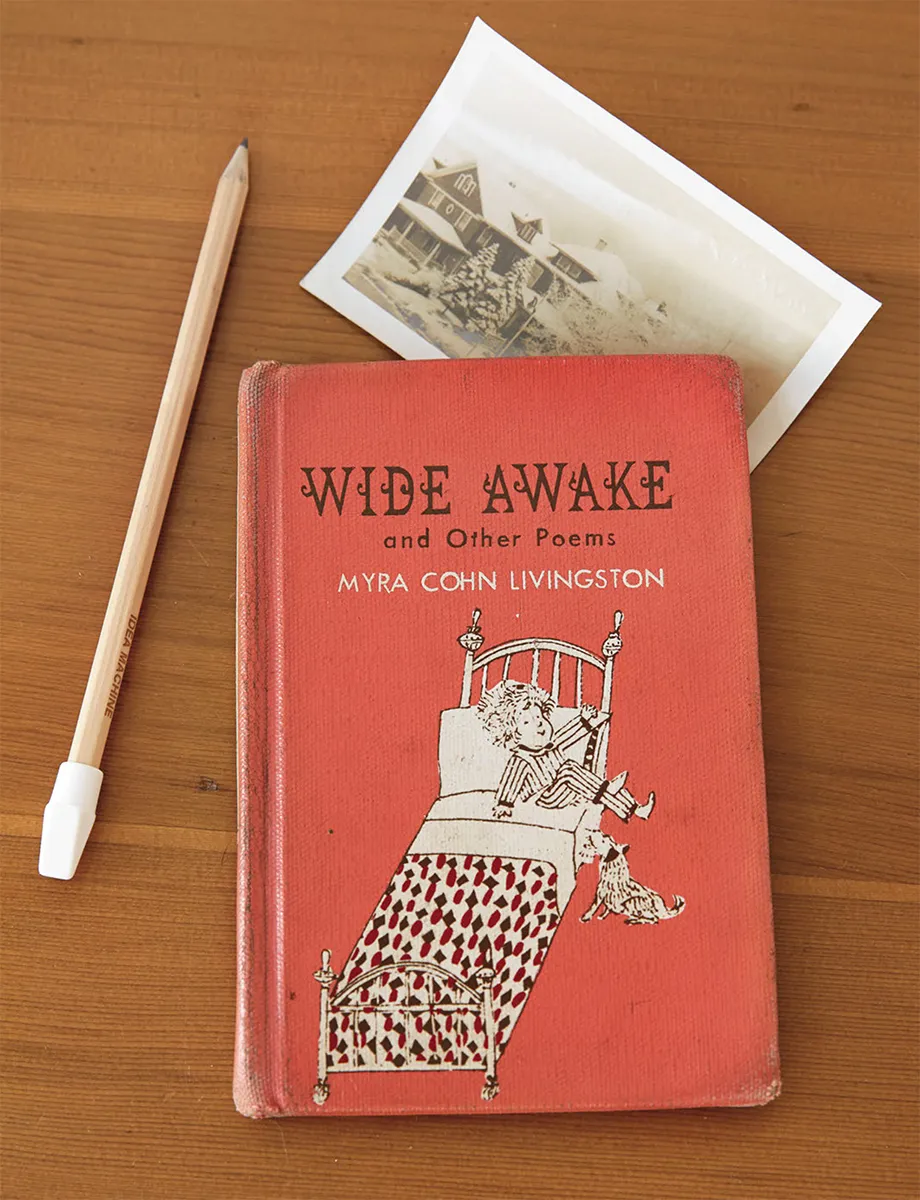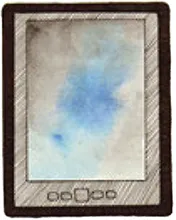![]()
CHAPTER ONE
COLLECTING BOOKS
One of my prized possessions: the first book I ever bought, Wide Awake. I was four.
We all know the standard interior decorating practice of adding a mirror to make a room appear larger. Books are mirrors of a different kind; they reflect our values, our thoughts, and what we hold dear, adding another type of breadth to a room. Though books literally (and, well . . . literally) heighten the scope and vitality of a space, they are not merely a decorative device. Likewise, a library is more than just a physical place—it is a space that tells a story. In fact, a bookshelf is readable in and of itself; as though reading a page, your eyes move along the spines as you conjure impressions. Look at friends’ bookshelves and you’ll get a deeper understanding of who they are and, most likely, you will see some of the same titles that you own. This chapter explores the ins and outs of collecting and sourcing books to build your own personal library, or to shape one you might have already, and how the books you choose to collect and display breathe life into your home.
COLLECTING
A library is a collection that is built book by book, and if you read or engage with the books you own, you most likely know your collection inside out and have a history with each volume. Every book, in its own way, has touched you, informed you—something not many inanimate objects can do. Books, no matter how many you have, create an environment of thoughtfulness because each one was acquired for its individuality and is treasured for that reason.
Beyond reading them, we collect books as aesthetic objects. Their colored, rectangular (and sometimes square) shapes are works of art. Though they are sturdy, rigid forms, they are composed of soft, supple materials: paper, cloth, glue, thread, and ink. Enjoying a book is as much a tactile experience (feeling the fabric of the cover, the edges of the pages, or an embossed signet or title) as it is a visual experience (taking in the various typography styles, illustrations, and design elements).
Though popular and convenient, e-readers tend to eliminate the tactile experience of the book, reducing it solely to its content, which is only part of what a book is. With the advent and proliferation of e-readers, I consider book collecting a form of rescuing. I fear an era in which a book is something a generation has only heard about, or seen an image of on their screens. It is up to us to safeguard books, honor them, cherish them, engage our children with them, and live with them, not as treasures so precious they are kept beneath lock and key, but as objects in daily use. In this way, they become part of our personal histories, which contributes to a broader cultural collective.
Collecting books is about gathering and adopting all that interests you, and anything that feels right in the home you continue to build, shape, and share. If you want to collect Harlequin Romance paperbacks from the 1970s and 1980s, go for it! There is no right or wrong way of going about it. But before you begin, it helps to consider what and how you collect, which will only make the hunting and gathering process richer.
The simplest way to begin a collection is to decide upon a subject and then allow it to flourish. Whatever you find intriguing, whatever interests you, is the path to follow (SEE SUBJECT IDEAS ON THIS PAGE). Because books are a magnification and expansion of our inner selves, collecting is a highly personal and subjective endeavor and an extension of our personal interests. There are no rules when it comes to collecting books; in fact, the more arcane the better. And because you are physically building something—a library—book by book, it is emotionally and intellectually rewarding and viscerally satisfying. It can also become wickedly addictive—a condition called bibliomania, where books take over your life. But that is for another book entirely!
I bought my first book when I was four. I will never forget choosing it from a bin on a table in the downstairs, usually off-limits section of the public library where they were holding their book sale. I chose it because I liked its size and thickness, and I liked that it contained words and drawings in equal quantities. It might have cost a quarter but I would have paid a full dollar for it. Thus began my collecting.
Evolution of the Book
HANDWRITTEN SCROLL
first book form, made of parchment
CODEX
c. AD 300–1500 covers are made of wood, pages are vellum
TYPESET PRINTED BOOK
c. 1500–present cloth and leather covered boards, pages are paper
E-READER
c. 2000–present electronica, no physical materials
Subject Ideas for Book Collecting
FICTION
Popular novels
Mysteries
Literature
Graphic novels
Science fiction
Poetry
Children’s
Westerns
Thrillers
Drama
Erotica
NONFICTION
Artist monographs
Atlases
Biographies
Cookbooks
Dictionaries
Fashion
Instruction manuals
Letters
Music
Religion
Science
Sports
HISTORICAL PERIODS
Ancient Greece
The Middle Ages
The Renaissance
Civil War
The Belle Époque
The Industrial Revolution
The Depression
American 1960s
TOPICS
First editions
Leather-bound novels
Livres d’artistes
Foreign language
Pop-ups
Pulitzer Prize winners
Anthologies
Bestsellers
MOVEMENTS
Romanticism
Abolitionism
Marxism
Surrealism
Existentialism
Jungianism
Women’s suffrage
Civil Rights
COLLECTING FOR CONTENT
Content is subject matter. It is the words in the book, the stories, ideas, and information expressed by the author. If you’re interested in content, you’ll be apt to collect an author’s entire oeuvre, or a grouping of, say, Caldecott Medal winners. You might build an entire collection on a particular subject area such as gardening or Beat poets or tribalism. You might have more than one copy of a title because there could be an added preface, an unabridged version, an updated edition. Or you might collect the same title in different languages. Like having a studio recording and a live version of the same album, having different versions broadens your collection and increases its merit.
As with any type of collecting, once you begin a path, it bifurcates. You might start by collecting books by nineteenth-century poets, then learn that one of the authors on your shelf also wrote novels, taking you down a whole new trail.
When content is the basis for your collecting you might ask, why pay more money for an earlier edition of the same title when you can buy a new version for less money? It is valuable to buy that earlier edition because it brings you closer to the author, nearer to the genesis of the work. Perhaps the author worked with this publisher in person, agreeing on the design or format. Perhaps the copy is signed by the author. These elements add distinction to your collection.
COLLECTING FOR FORM
Collectors have always been concerned with the book’s physical beauty. Up into the eighteenth century, books were often sold unbound so customers could select personalized bindings, choosing colors and materials or incorporating a family crest. Because of this, bookbinders were often permanent workers at bookshops. It wasn’t unti...





